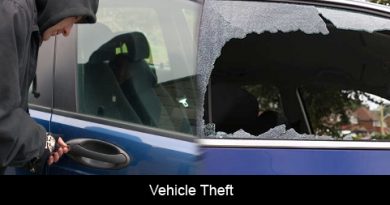Guard against the dangers of fatigue from jet lag!!
Should you drive immediately after a long flight and what are the risks involved in climbing behind the steering wheel while still suffering from jet lag? A friend of mine is planning a trip to the parents in law in the US and is already dreading the reality of a 16hour flight…
Another friend at the Department of Transport emailed some interesting info compiled by Interactive Driving Systems to the Arrive Alive website, and I would like to share this with our online visitors.
What is Jet Lag?
Jet lag is a condition that travellers may experience when flying across time zones. Extremely long flights (i.e., international travel) or flights with multiple segments can leave the traveller exhausted upon arrival and has resulted in a growing number of fatalities across the world.
For example, a couple of years ago, there was prominent case of a person who took an overnight flight from the US to the UK collected a rental car at the airport, drove tired and ended up in court after being involved in a fatal road crash.
The following links have more detail about the specific case.
• http://news.bbc.co.uk/1/hi/england/nottinghamshire/8165197.stm
Since that time many large organisations have reviewed and updated their policies and guidance documents on jet lag and driving. Despite this, we still hear many cases of similar tragic events occurring in a number of organisations. For this reason we are sharing the following eight good practice suggestions to consider incorporating into local policies/guidelines.

Good Practice suggestions in dealing with Jet lag and safe driving
1. All employees travelling internationally, overnight or on flights with significant time zone adjustment or arriving late at night, particularly to locations where driving is on the other side of the road to that which you normally drive, should not drive a rental car immediately due to jet lag and increased collision risks.
2. On arrival, employees should travel via the most cost effective, safe and appropriate method of transportation (such as car service, hotel shuttle, taxi, or public transportation) to reach their final destination. On the second day at their destination employees may be allowed to obtain a car rental if it is the only viable and safe travel option.
3. Local shuttle services (such as hotel shuttles) should be the first choice for ground transportation to your hotel, workplace, home and other destinations. Express rail links to and from airports should also be used when suitable. Company organised car services or public transportation should be the second choice with inter-site shuttles a consideration for travel to, from and between company sites. Taxis and car rental should only be used where other forms of transport are incompatible with the business requirement.
4. Similarly, if you are arriving home late from a long flight, arrange for someone to pick you up at the airport. Don’t take unnecessary risks.
5. Employees visiting another country should never operate a motor vehicle without first considering and understanding local driving conditions (legal and culture) and transportation alternatives.
6. Business travellers are discouraged from driving in any country where they are unfamiliar with the roads or where driving conditions vary significantly from those in the home country. This could include driving on the opposite side of the road versus your home country, driving on ice or snow, driving on unpaved road or use of a motor vehicle with substantially different controls (eg manual transmission or four wheel drive) from those to which a driver is accustomed. In some countries, local operating business units or in-country organisations provide drivers for visitors. Employees should consult with in-country management regarding policies pertaining to vehicle rental or driving in foreign countries.
7. Employees who are not local nationals must have a valid driver’s license from their home country, and/or international driver’s license/permit where required, in addition to meeting the foreign country’s requirements for driving in that country.
8. When rental of a car is unavoidable, arrangements should be made through the approved company travel provider. The approved travel provider should advise the employee of the insurance coverage that must to be obtained with the rental. Only employees who have a valid driving licence / permit and who have been registered as a driver with the hire company are permitted to drive a hire vehicle.
As a first step, if you have people in your organisation taking overnight or long-haul flights, we encourage you to review your programs against the above, and develop robust procedure to ensure their on-going road safety when they arrive.
For more on Driver Fatigue also view:
- Energy Drinks, Driver Alertness/ Tiredness and Safe Driving
- Study on Energy Drinks and Driver Tiredness
- Driver Fatigue and Road Safety
- Road Safety & Health – Page on Fatigue
- Driver Tiredness
- Facts about drowsy driving internationally
- Sleep Apnoea and Road Safety
For more on Car Rental and Road Safety view:




